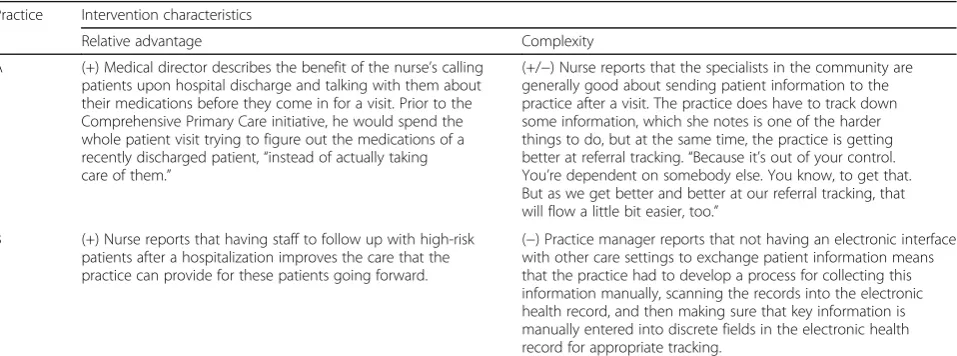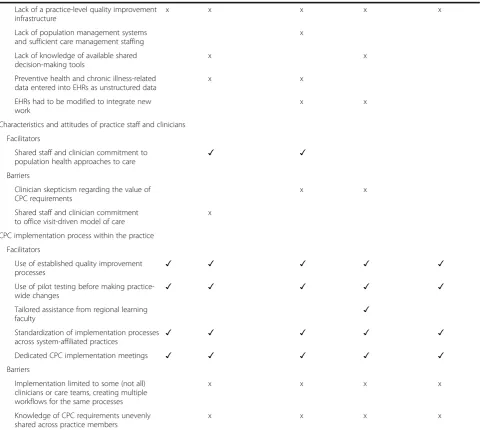Using the Consolidated Framework for Implementation Research (CFIR) to produce actionable findings: a rapid-cycle evaluation approach to improving implementation
Full text
Figure




Related documents
The use of immunohistochemistry to further characterize breast cancer globally has introduced a new dimension to the knowledge of breast cancer, it can no longer be regarded as
Based on these findings, we conclude that photoprotective compounds such as scytonemin and MAAs may play a vital role not only in photoprotection but also in
We read with interest the special article on “Reexamination of the age limit for defining when puberty is precocious in girls in the United States: implications for evaluation
National sample of 3192 US- born non-Hispanic white, non-Hispanic black, and Mexi- can–American children 3 to 6 years of age (36 – 83 months) examined in the third National Health
The analysis of variance indicated that there was high (p ≤ 0.01) significant difference among tested tef genotypes for days to heading, plant height,
Key words: Broadcasted summer rice, chlorophyll stability index, germination percentage, leaf anatomy, moisture deficit, relative water
Background: The Complete Blood Count (CBC) is a test frequently performed on children presenting to the Pediatric Emergency Department (PED), usually for the evaluation of
Compared with children whose mothers had a college education, children whose mothers had less than a high school education had 19.4 times (95% confidence interval [CI], 2.6 –142.4)

